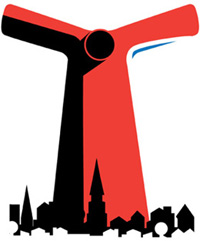“Let facts steer local cruise debate toward a more logicial outcome” by Jay Williams-

Growing opposition to the proposed downtown cruise terminal is propelling proponents to choke off debate before others learn the facts.
The president of the Maritime Association of South Carolina, writing in an article, “Just git ’er built,” provides another reason why we shouldn’t. Pam Zaresk boasts that “the proposed cruise terminal is not just a building — it’s an international passenger processing facility. It is the border of our country and as such is subject to numerous federal rules and regulations.”
She’s right. So why would we put that border, plagued by security issues like drug running, nano viruses, weapons and more, at our front door?
Yet, astonishingly, Ms. Zaresk asserts that downtown is the only location for a cruise terminal.
There are better choices. The Columbus Street Terminal, twice as large as Union Pier with room for both a terminal and BMW operations, is more isolated, 10 times farther from homes and offers direct access to primary roads that would take all traffic off East Bay. Patriot’s Point, Laurel Island and North Charleston also have promise. And the decommissioned Navy Base, with no resident population on land that would otherwise be difficult to develop, is ideal for a terminal with state-of-the-art security.
Then she proceeds to advance new regulations that will soon “require much cleaner, lower sulfur fuel in all ships.” Before you take that deep breath, she forgot to tell you that those regulations are being phased in through 2015, or later, as the powerful cruise industry has mounted a major counteroffensive against their implementation. Moreover, the “cleaner” fuel required after 2015 will be nearly 70 times dirtier than the fuel trucks use on U.S. highways today!
Minimizing the evils of ship exhaust and blithely ignoring the concerns of the Charleston and S.C. Medical Societies, she may not realize that diesel exhaust was linked to cancer and other serious illnesses in a recent 12,000-person study.
We know the facts; we can see the soot. How can knowledgeable terminal proponents claim it is no problem? Why do they write letters justifying air pollution based on the wind direction? Why do the State Ports Authority, the mayor and Carnival reject the only healthy solution for idling cruise ships belching toxic exhaust in port: shore side power?
Fortunately, before a new terminal can be built, state regulators will carefully consider all the evidence. That evidence includes the impacts of traffic and passenger congestion, the harm to air quality and the environment, and potential damage to Charleston’s neighborhoods. It’s reassuring that more thoughtful people are studying this ill-sited proposed terminal rather than mindlessly bleating, “Git ’er built.”
No one opposes a cruise terminal and jobs somewhere, but jamming a cruise terminal like a sword into the side of the peninsula is senseless. This terminal will cause problems similar to those of a major airport. Why cram it into downtown, creating turmoil in the heart of the city, when cruisers just want an easy way to get on their ship to sail into to the Caribbean?
Why do proponents repeat discredited claims for cruise terminal benefits long after the Miley and Associates study, funded by the Historic Charleston Foundation, proved that cruise passengers spend only $66 a day compared to $718 a day for traditional tourists?
Why aren’t we told that the city loses money managing cruise tourists, that the city won’t make a dime from terminal revenues, or that cruise ship tourism has irreversibly damaged Venice, Italy, and Key West, Fla.?
How can these proponents risk Charleston’s future on a downtown cruise terminal that will produce less than one-half of one percent of the Port’s annual revenues?
Union Pier is simply the most valuable undeveloped waterfront property on the East Coast, with incredible views of the harbor and Mount Pleasant. It presents a once-in-a-lifetime opportunity to expand Charleston’s small-scale streetscape with stores, offices, hotels, coffee shops, restaurants, residences, public spaces and waterfront parks. This development would produce hundreds of permanent jobs, generate millions annually in tax revenues, and ensure the future of Charleston.
Instead, cruise terminal proponents want to open a gash in the side of the peninsula, expose us to increasing border security problems, permanently blight the area with nine acres of surface parking, an ugly warehouse terminal building, and noisy, idling cruise ships, buses and provisioning trucks — squandering priceless downtown waterfront that will be sealed off from the rest of us forever. That’s not a vision, that’s a 100-year mistake.
Jay Williams Jr., a radio broadcasting consultant, is a member of the Charlestowne Neighborhood Association and the Charleston Communities for Cruise Control (C4), which hosts his blogs at CharlestonCruiseControl.org.
(Also published in P&C.)
